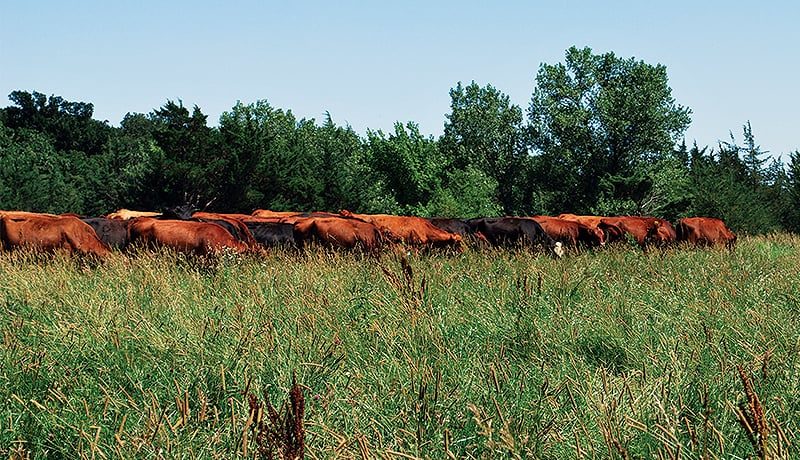No-Till Farmer
Get full access NOW to the most comprehensive, powerful and easy-to-use online resource for no-tillage practices. Just one good idea will pay for your subscription hundreds of times over.

ALL ABOUT MINDSET. Raising cover crops for grazing means a different approach and decision making, compared to raising covers in conjunction or rotation with row crops.
Grazing livestock in the fall is a well-known method for livestock producers to go a few weeks longer without having to resort to feeding their stored hay and forage. Raising cover crops can further extend that window into late fall and even through the winter to spring, allowing livestock producers to graze their animals even longer.
If you are looking to graze livestock on covers, your objective should be maximizing efficiency and productivity — probably a different goal than if you are raising covers in conjunction or rotation with row crops, says Rocky Lemus, a research professor and Extension educator who specializes in grazing systems and hay production at Mississippi State University.
“You want to be selective about which type of cover crop you use for grazing,” Lemus says. “You may have to manage early termination of the cover crop so you can plant a row crop after it.”
Annual cover crop mixtures can make very nutritious and economical grazing crops for any season, says Jerry Lindquist, Michigan State University Extension grazing educator. The best cover crop blend from a livestock nutrition perspective is a mixture of brassicas, small grains, legumes and cool season grasses. Multi-species mixes with at least four species of covers are especially good for finishing grass-fed beef cattle.
“Most hay and bermuda grass won’t be active for summer grazing until May, so try to plant early-maturing mixes with a small grain as part of the system,” Lemus recommends. “Oats, triticale, and cereal…